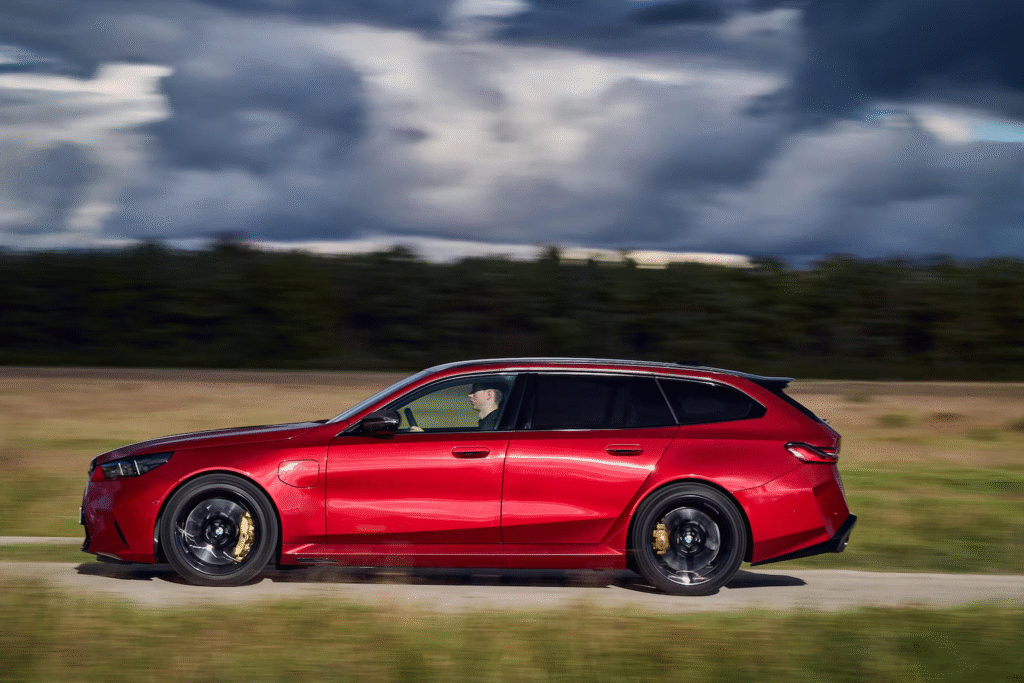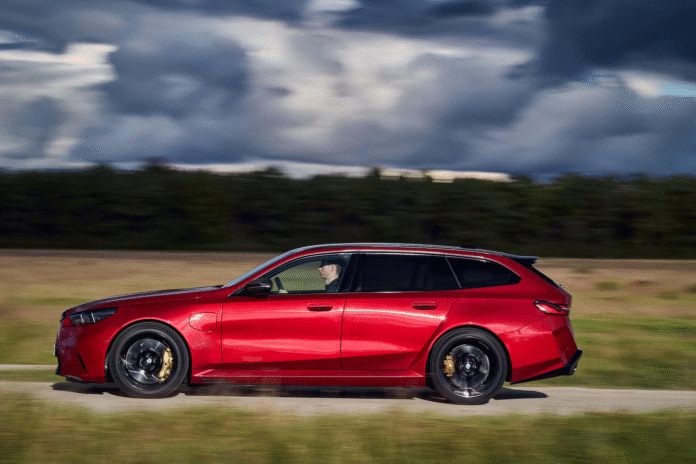
In a world dominated by towering SUVs and ever-expanding crossovers, the humble station wagon—long dismissed as a relic of suburban life—is quietly staging a comeback. But these aren’t your parents’ wood-paneled family haulers. Today’s wagons are engineering marvels, delivering high-performance thrills and luxury comfort, all wrapped in a package that still hauls groceries and golden retrievers.
Enter the “super wagon”—a breed of high-horsepower, high-priced wagons designed not for the masses, but for an impassioned few. With automakers like BMW, Audi, and Mercedes-Benz investing in these niche vehicles, the question begs: why do wagons still exist in the SUV era?
Fan Service on Four Wheels
BMW’s recent U.S. launch of the M5 Touring is a loud answer to that question. This plug-in hybrid super wagon offers 717 horsepower, a blistering 0-to-60 mph sprint in just 3.5 seconds, and a starting price of $121,500. For context, that’s sports car territory—but with five seats and a trunk big enough for weekend luggage.
According to Juliana Ochs, a business development manager at BMW, the decision to bring the M5 Touring stateside came straight from customer demand. “Customers don’t want to sacrifice utility and performance,” she said. “The Touring is the new kid on the block. We listened.”
BMW isn’t alone. Audi’s RS6 Avant—arguably the godfather of the modern super wagon—sells around 1,000 units a year in the U.S. despite a price tag north of $126,000 and a waitlist that once stretched up to three years. Its specs are equally jaw-dropping: 621 hp, 627 lb-ft of torque, and a 0-60 mph time of just 3.3 seconds.
“It’s a very special car,” Audi spokesperson Mark Dahnke said. “Buyers receive applause from fellow enthusiasts. Even Bugatti and R8 owners respect the RS6 Avant.”
The Cult of the Wagon
So who’s buying these machines? According to industry insiders, it’s a passionate, well-heeled group—often loyal brand devotees who know the automaker’s global portfolio intimately. These enthusiasts often treat their wagons like prized possessions, choosing them not out of necessity, but out of affection.
“There’s a cult following when it comes to wagons—not just BMW, but all manufacturers,” said Jordan Bray, a sales adviser at BMW of Latham in New York. “People are definitely calling in about the M5 Touring. We’re super excited to see it.”
And that enthusiasm has real financial implications. Tyson Jominy, vice president of data and analytics at J.D. Power, pointed out that wagon buyers often pay full price, with no incentives. “Wagon buyers spend real money,” he said. “A super wagon is fan service to your most loyal owners.”
More Than Nostalgia
While the emotional appeal is strong, today’s wagons offer tangible advantages over their bulkier SUV cousins. Lower to the ground, they maintain a better center of gravity, meaning sharper handling and better fuel economy. They also tend to perform better on winding roads—precisely the kind of terrain that makes SUVs feel clumsy.
“A wagon works just as well as an SUV in so many cases,” said Tony Quiroga, editor-in-chief of Car and Driver. “And it’s more fun to drive.”
Mercedes-Benz is betting on that balance of practicality and performance with its upcoming 2026 E53 Hybrid wagon, which combines a turbocharged 3.0-liter inline-six engine with an electric motor to produce 577 horsepower. It also brings all the luxury trappings of the new E-Class: advanced infotainment, high-end comfort features, and cutting-edge connectivity.
As one Mercedes spokesperson put it, “It combines the best of both worlds: exhilarating driving dynamics and performance with the efficiency of all-electric driving for daily commutes.”
A Shrinking Battlefield
Still, the wagon’s resurgence comes with caveats. The broader wagon market continues to shrink in the U.S., with companies like Volvo discontinuing models like the V60 Polestar Engineered plug-in wagon. Even Subaru’s Outback, long considered one of the last mainstream wagons, has increasingly morphed into more of a lifted crossover than a traditional wagon.
Automakers acknowledge the trend, but that only sharpens the mystique of the remaining models. Patrick Lalewicz, a product manager at BMW, said the rarity of the M5 Touring only adds to its appeal. “It’s a car that grabs attention,” he said. “Customers want something special.”
And it’s not just older buyers, either. “New and young customers are coming into the brand with the M5 Touring,” Lalewicz added.
Built to Thrill, Not Just Haul
Ultimately, the super wagon is less about mass appeal and more about honoring a legacy. It’s a statement vehicle, a celebration of performance, design, and engineering for those who know what they’re looking for—and are willing to pay for it.
Sure, SUVs may dominate the streets, but wagons still rule the hearts of a devoted few. In a world that often prizes excess over nuance, these machines are proof that purpose-built performance still has a place—low to the ground, brutally fast, and with enough room in the back for a weekend getaway.
As Tony Quiroga aptly put it: “Pretty cool, right?”


